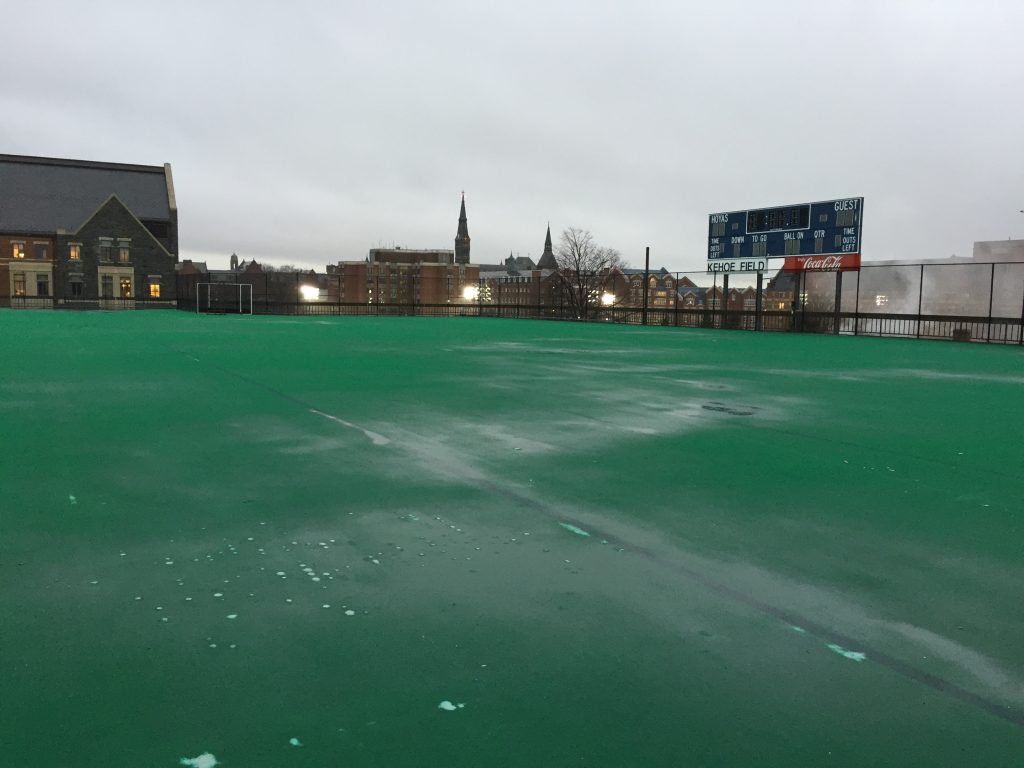It appears that Kehoe Field has sprained its final ankle and torn its last ligament. On Tuesday, Feb. 2, Todd Olson, Vice President for Student Affairs and Robin Morey, Vice President for Planning and Facilities Management, announced the closure of the field atop Yates Field House.

Daniel Varghese
Closing the field is a necessary step, although it has taken too many years for the University to show a sense of urgency when it comes to this problem. Kehoe did not experience a sudden death, but rather a long, slow deterioration, and the administration should have dealt with its obvious flaws many years ago.The field has long suffered from a myriad of ailments, ranging from its lack of an effective drainage system, which leaves the turf water-logged for days after a storm, to its thin layer of padding over the concrete base below. As anyone who has had the misfortune of attempting a dive, slide, or tackle on it knows, Kehoe offers about as much cushion in the event of a fall as a patch of pavement covered in a sheet of sandpaper.
This Editorial Board would like to commend the administration for seeking out alternatives for students to use while Kehoe is closed. Olsen and Morey’s message noted that the school hopes to reach an agreement with the Boys and Girls Club of Greater Washington for use of its field on S Street. Despite its inconvenience, with many in club sports’ leadership expressing concerns about the impracticality of travel times and carrying equipment such a far distance, this new field should result in many fewer injuries to Georgetown students.
Given current state of athletics facilities on campus, we approve of the decision to close Kehoe. Having said that, things should never have been allowed to get this bad. These problems are years, even decades, in the making, and the administration should have undertaken an overhaul of its playing surface long ago. Now, with Kehoe Field reduced to an enormous, unusable patch of ground on a campus in desperate need of space, we hope that its renovation will finally begin.





